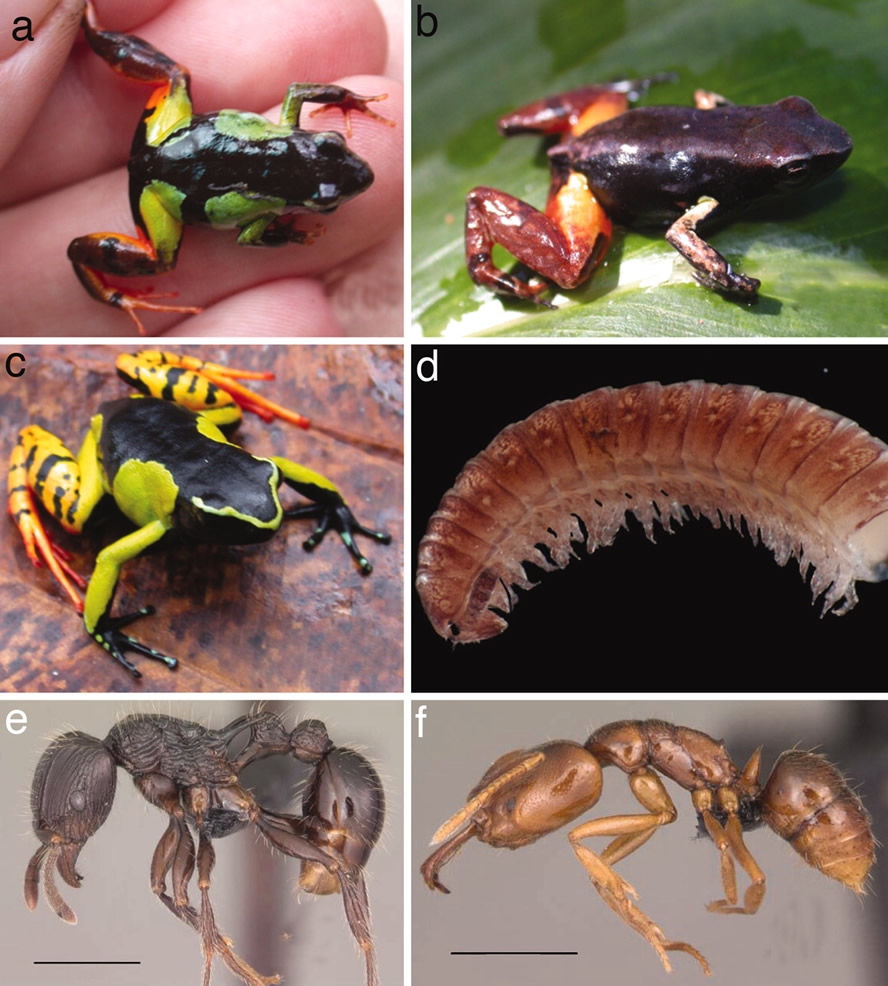

ACS CHEMICAL & ENGINEERING NEWS: "August 15, 2005,
Volume 83, Number 33, p. 38
Unearthing rare treasures; SF6 is reactive fluorinator; Cornflower pigment pictured;
Cholera toxin's harmful handshake; Frogs eat ants for poisonous protection
The brightly colored Mantella frogs of Madagascar seem like they'd be an easy-to-spot snack. But for most predators, those vivid hues translate to "keep away" rather than "eat me." That's because the frogs' skin contains poisonous alkaloids. Despite the advantageous presence of the alkaloids, the frogs don't make the chemicals themselves. Instead, the frogs sequester the alkaloids from a steady diet of alkaloid-rich ants, according to a new report from Valerie C. Clark of Columbia University and colleagues (Proc. Natl. Acad. Sci. USA, published online Aug. 8, dx.doi.org/10.1073/pnas.0503502102). Scientists had previously identified ants as the source of alkaloids in the neotropical poison dart frogs of South and Central America, but Clark's is the first study to identify the source of the Madagascar frogs' alkaloids. Clark notes that the finding is a striking example of convergent evolution--the phenomenon in which different species end up appearing superficially similar because they have taken the same approach to overcoming a challenge in their environment.
SCIENCE CONCENTRATES--
link to original
Chemical & Engineering News
ISSN 0009-2347
Copyright © 2005"
________________________________________
Chemical & Engineering News
Copyright © 2005 American Chemical Society"

Figure
1 reproduced above from Clark,
V. C.*,
C. J. Raxworthy, V. Rakotomalala, P. Sierwald, and B. L. Fisher. 2005.
Convergent evolution of chemical defense in poison frogs and arthropod prey
between Madagascar and the Neotropics. Proceedings of the National Academy
of Sciences USA. 102:11617-11622.
"Fig. 1. Mantella poison frogs and their putative arthropod
prey that contain the same defensive alkaloids. (a) M. madagascariensis
(shown actual size). (b) M. bernhardi.(c) M. baroni.(d)
R. purpureus.(e) T. electrum.(f) A. grandidieri.
(Scale bars, 1 mm.) "